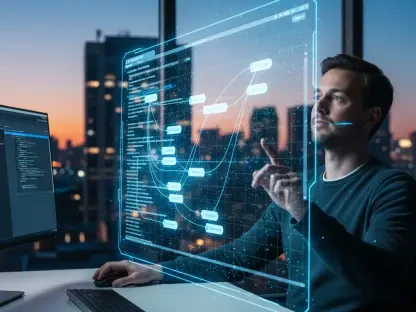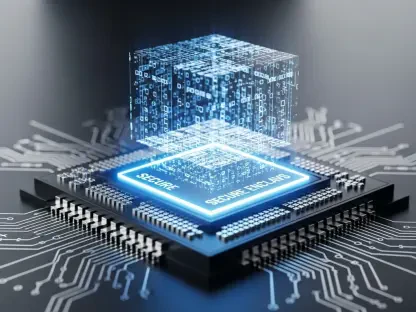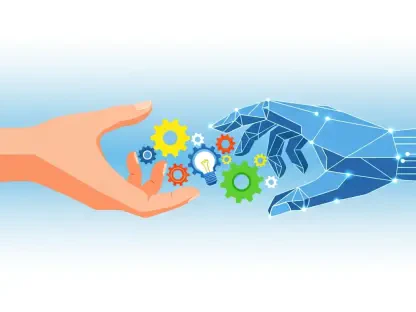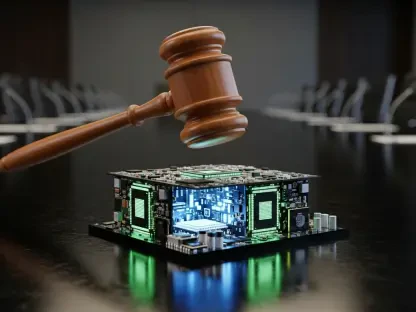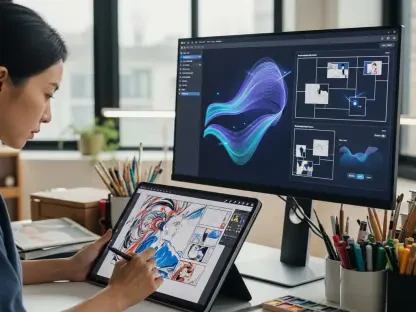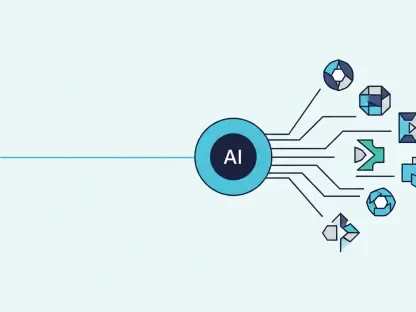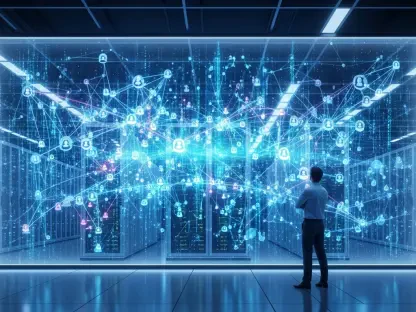As we quickly approach 2025, the landscape of technology is poised for dramatic transformations. From the seamless integration of artificial intelligence in everyday devices to the convergence of augmented and virtual reality, the next few years promise to deliver remarkable advancements that will redefine our interaction with gadgets. This article sheds light on the pivotal tech trends set to revolutionize innovation and shape the future of our digital world.
Artificial Intelligence: The Smart Core of Future Gadgets
AI in Everyday Devices
Artificial intelligence is no longer a futuristic concept; by 2025, it will be a ubiquitous presence in our daily lives. Household devices like refrigerators will go beyond storing food—they will offer recipe suggestions tailored to available ingredients and dietary preferences. Similarly, AI-powered cars will not only navigate but also provide real-time suggestions for traffic-free routes, enhancing driving efficiency and reducing commute times.
As AI becomes more integrated, it will extend beyond just these basic functionalities. Imagine a vacuum cleaner that, through machine learning algorithms, becomes aware of the dirtiest parts of your house and prioritizes those areas. Or consider AI-enhanced thermostats that learn your schedule and adjust the temperature accordingly, ensuring comfort while maximizing energy efficiency. These improvements signify a broader trend: AI making daily life more convenient and personalized.
Predictive Analytics: The Brain Behind AI
The true strength of AI resides in its predictive analytics capabilities. Leveraging vast datasets, AI algorithms will anticipate user needs with unparalleled accuracy. Imagine a smartphone that proactively suggests apps based on your current activities or a virtual assistant that schedules your day with precision. Predictive analytics will make interactions with technology more intuitive and personalized, transforming user experiences.
Additionally, predictive analytics will impact sectors such as healthcare and retail. Wearable health devices powered by AI will predict potential health issues, suggesting preventive measures long before a user becomes symptomatic. Retailers will utilize AI to preemptively suggest products to consumers based on their past purchases and browsing habits, making shopping experiences more seamless and customized. The convergence of AI and predictive analytics will touch nearly every facet of life, fundamentally altering how we engage with our environments.
The Rise of Augmented and Virtual Reality
Immersive AR/VR Experiences
By 2025, augmented reality and virtual reality will converge into a single immersive experience. AR glasses will become lightweight and unobtrusive, seamlessly blending digital information into the physical world. On the VR front, expect more engaging and realistic environments that will revolutionize entertainment and education. The marriage of these technologies offers a glimpse into a future where digital interactions are as intuitive and fluid as real-world ones.
The entertainment industry is already seeing the potential, with AR and VR enhancing video gaming experiences to unprecedented levels of immersion. Educational systems will follow suit, with students donning VR headsets to take “field trips” to historical sites or participate in interactive science experiments. These developments are not just about adding layers of fun, but significantly enhancing learning efficiency and comprehension.
Mixed Reality: Bridging Physical and Digital Worlds
Mixed Reality (MR) will take center stage, allowing users to manipulate virtual objects within the physical space. This technology will prove invaluable in fields like remote collaboration and interactive learning, where tangible interaction with digital content enhances understanding and engagement. MR will blur the lines between the real and virtual worlds, opening new possibilities for innovation.
Take healthcare for example; surgeons equipped with MR headsets will be able to view real-time physiological data superimposed on patients, enhancing surgical precision and reducing operational risks. Architectural and design professionals will benefit from MR by visualizing and adjusting 3D models in real-world spaces, improving project accuracy and reducing time spent on revisions. These applications underscore the powerful impact MR will have in various sectors.
The Expanding Internet of Things
Interconnected Devices
The Internet of Things ecosystem will see exponential growth, entwining more devices into our daily routines. More than just smart homes, we will witness the rise of smart cities and smart industries. Everyday appliances, vehicles, and even public infrastructure will be interconnected, creating an intelligent network that enhances efficiency and convenience.
Imagine cities with traffic lights that adjust in real-time based on traffic conditions, or public transportation systems that adapt to passenger flow seamlessly. In industries, machines will communicate with each other to optimize manufacturing processes, reduce waste, and minimize downtime. This interconnectedness will lead to unprecedented levels of efficiency and productivity in both public and private sectors.
5G and Future 6G Networks
Driving this connectivity will be the ongoing rollout of 5G technology and the potential emergence of 6G networks. These advancements will provide the necessary bandwidth and speed to accommodate the increased data flow from numerous interconnected devices. Holographic displays and real-time data processing will become feasible, significantly enhancing IoT applications.
Enhanced network capabilities will transform various fields, including healthcare, where remote surgeries become possible, and education, where real-time, interactive virtual classrooms can be created. Businesses will thrive on the improved data speeds and reduced latency, enabling more robust and reliable virtual collaboration. As these networks evolve, they will not only expand the reach and functionality of IoT but also redefine our expectations of real-time digital interactions.
Quantum Computing: From Theory to Reality
Quantum Computing’s Potential
Quantum computing is set to transition from a theoretical concept to practical application by 2025. This revolutionary technology will enable us to solve complex problems beyond the capabilities of classical computers, such as simulating molecular interactions for drug discovery or optimizing vast logistical networks. The power of quantum computing will redefine what’s possible in various scientific and industrial fields.
The implications are vast: in finance, quantum algorithms could predict market trends with unprecedented accuracy; in chemistry, they could identify new materials with unique properties. Industries like pharmaceuticals will leverage quantum computing to accelerate drug discovery processes, leading to faster developments of new treatments. The sheer computational power of quantum systems promises to accelerate innovation across multiple domains.
Cybersecurity Implications
With the rise of quantum computing, traditional encryption methods could become obsolete. This shift will necessitate the development of quantum-resistant cryptographic solutions to maintain data security. Research and investment in new cybersecurity measures will be crucial to protect sensitive information in the quantum era.
However, the transition won’t be without its challenges. Existing encrypted data will become vulnerable, creating potential security risks across financial, military, and personal communication systems. Companies and governments are already investing heavily in quantum-resistant encryption to safeguard data against this emerging threat. As we approach a quantum future, cybersecurity will become a critical focal point to ensure privacy and data integrity.
Proliferation of Autonomous Systems
Beyond Self-Driving Cars
While self-driving cars have garnered much attention, autonomous systems will extend their reach beyond transportation by 2025. Autonomous delivery drones and robotic assistants for seniors and individuals with disabilities will become commonplace, significantly improving safety and accessibility in various sectors. These innovations will not only boost efficiency but also enhance the quality of life for many.
In logistics, autonomous drones will revolutionize delivery systems, speeding up shipment times and reducing human error. Within healthcare, robotic assistants will provide critical support to the elderly and disabled, offering both physical help and companionship. The broader application of autonomous technologies signals a shift towards an ever-more automated world, where tasks can be performed with minimal human intervention and maximal efficiency.
Ethical and Social Considerations
As autonomous systems become more integrated into society, ethical and social considerations will take center stage. Issues such as privacy, job displacement, and decision-making ethics will prompt robust public discourse and drive the creation of regulations to ensure these technologies benefit humanity.
Consider the debate over autonomous vehicles and job loss in the trucking industry. While these technologies promise safety and efficiency, they also risk displacing millions of workers. Additionally, the ethical implications of decision-making in life-threatening situations will require careful scrutiny and regulation. Policymakers, technologists, and ethicists will need to collaborate to navigate these complex issues, ensuring that the adoption of autonomous systems is both equitable and beneficial to society at large.
Emphasis on Sustainable Technology
Eco-Friendly Gadget Design
Sustainability will be a key focus in tech innovation. Future gadgets will prioritize eco-friendly designs, incorporating biodegradable materials and emphasizing energy efficiency to minimize environmental impact. This shift towards sustainable design will be critical in addressing the growing concern over electronic waste.
Expect to see gadgets with recyclable components and energy-efficient operation modes becoming the standard rather than the exception. Companies will invest in developing new materials that not only perform well but also degrade efficiently at the end of their life cycles. This pivot towards sustainability in gadget design is essential to tackling the pressing environmental challenges that our planet faces.
Advances in Energy Solutions
As we swiftly move toward 2025, the technological landscape is set for profound transformations. The seamless integration of artificial intelligence into our everyday devices is just the beginning. We are on the brink of experiencing the convergence of augmented reality (AR) and virtual reality (VR) in ways previously unimaginable. These advancements promise to redefine how we interact with our gadgets and the digital world around us. AI will become more intuitive, making our devices smarter and more responsive to our needs, while AR and VR will break new ground in both entertainment and practical applications. Imagine a world where virtual meetings feel as real as face-to-face interactions, or where AR can overlay useful information onto our physical surroundings in real-time. This article highlights the pivotal tech trends that are poised to revolutionize innovation, offering a glimpse into a future where our digital and physical worlds are seamlessly intertwined. The coming years promise a remarkable evolution in technology that will shape the future and redefine our everyday experiences.



